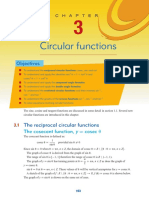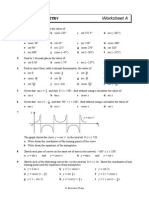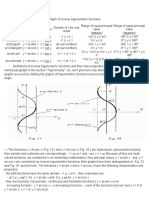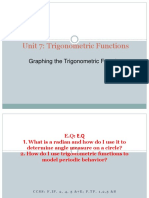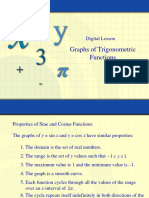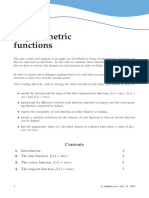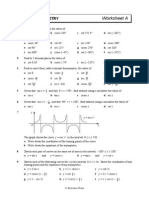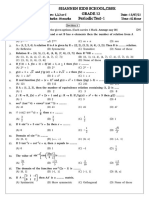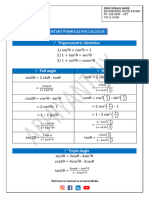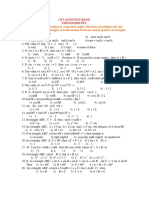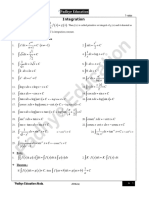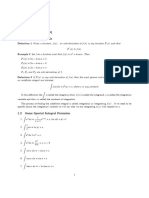0% found this document useful (0 votes)
109 views41 pagesP3 Chapter 3 Trigonometric Functions
Chapter 3 covers trigonometric functions, specifically secant, cosecant, and cotangent, including their definitions, graphs, and properties. It also discusses trigonometric identities, inverse trigonometric functions, and provides examples and exercises for practice. The chapter emphasizes the relationships between these functions and their applications in solving equations and proving identities.
Uploaded by
lianyanni011018Copyright
© © All Rights Reserved
We take content rights seriously. If you suspect this is your content, claim it here.
Available Formats
Download as PDF, TXT or read online on Scribd
0% found this document useful (0 votes)
109 views41 pagesP3 Chapter 3 Trigonometric Functions
Chapter 3 covers trigonometric functions, specifically secant, cosecant, and cotangent, including their definitions, graphs, and properties. It also discusses trigonometric identities, inverse trigonometric functions, and provides examples and exercises for practice. The chapter emphasizes the relationships between these functions and their applications in solving equations and proving identities.
Uploaded by
lianyanni011018Copyright
© © All Rights Reserved
We take content rights seriously. If you suspect this is your content, claim it here.
Available Formats
Download as PDF, TXT or read online on Scribd
/ 41
